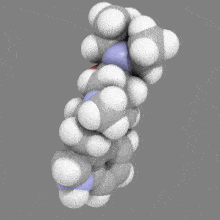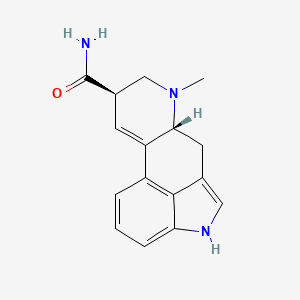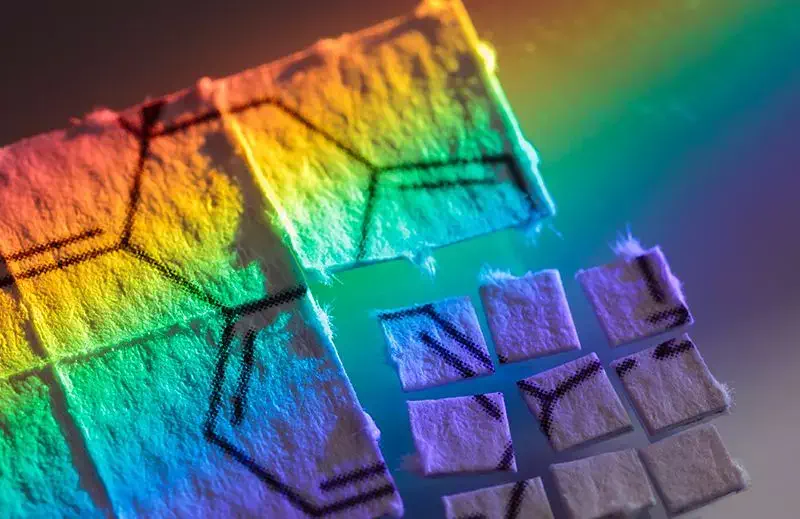What are Lysergamides
Lysergic acid which is also referred to as D-lysergic acid is considered a precursor for a wide variety of ergoline alkaloids produced by the ergot fungus and is also found in the seeds of turbina corymbosa, Ipomoea tricolor, and Argyreia nervosa (1). These plants are popularly known as ololiuhqui, morning glories, and Hawaiian baby woodrose respectively. Lysergic acid or lysergamides are used as pharmaceuticals and also as psychedelic drugs (LSD) (2).

Lysergamide belongs to the family of anti-inflammatories and has been used as an antihistamine for many years. When used as a topical ointment, it is effective in reducing symptoms of allergic rhinitis and itching. It is most well known for being historically popular with skin problems such as acne, eczema, rosacea, blisters, and even herpes outbreaks.
Lysergamide (a naturally occurring compound) was first identified by J.R. de la Rosa, who isolated it from a blueberry plant, called Lysergarum, in his biography “The Psychedelic”. The compound had been named “lysergal” after a Greek work translated by Eusebius in the twelfth century. The name has stuck, although sometimes in an amusing way: some sources list lysergal as the common name for lysergic (an amino acid), whereas others list lysergamide as the name of the compound itself. The latter choice seems more appropriate.
Lysergamide of Xylene
Lysergamide of xylene are collectively called lysergamides and contain a variety of chemicals with diverse agonist and antagonist activity at different serotonin and dopamine receptors. They are present in plants such as milkweed, hops, blueberry leaf, echinacea, and catnip. Lysergamide of xylene is currently under investigation for its potential usefulness in treating ADHD, inflammatory bowel disease, obsessive-compulsive disorders, dementia, Parkinson’s disease, fibromyalgia, chronic fatigue syndrome, depression, migraine headaches, restless legs syndrome, and syndromes related to multiple sclerosis. There is also preliminary evidence that suggests lysergamidase (LysG) is a positive modulator for rodent models of neurological disorders such as stroke, and multiple sclerosis (MS). Preliminary studies in animals seem to suggest that LysG may have some potential for use as an antidepressant in depressed patients. However, as of yet, there is no human data to support these conclusions.
Common side effects of Lysergamides
Lysergamide (the medical term for lysergic) is a natural compound, meaning it is synthesized in the body. It is considered quite safe. Common side effects include mild stomach pain, vomiting, headache, constipation, diarrhea, and anxiety. Because it appears to be a naturally occurring compound, some companies have designed a dissimilar, artificial compound that is marketed under the name “EPSmitter”, and is used in all kinds of wrongful ways.
Some Uses of Lysergamides

Lysergamide has been found to be effective in the treatment of psychotic disorders, such as schizophrenia and post-traumatic stress disorder. In some cases, patients have reported erotic and sexual experiences with erotic stimuli, which are thought to be associated with the lysergamide metabolite ergonine. There are several other uses for lysergamides. In the field of psychiatry, it is commonly prescribed for people with depression who also suffer from irritable bowel syndrome, a condition associated with chronic diarrhea. The low potency nature of lysergamide suggests that it is less potent than the other treatments for IBS, which makes it particularly useful for treating people who cannot tolerate strong medications.
Lysergamides and their use for Irritable Bowel Syndrome
Recently, interest has focused on lysergamides and the possible role they play in the treatment of irritable bowel syndrome. Because ergot fungus is the causative agent of IBS, many researchers have looked at the possibility that lysergamides could be useful in the control of this disease. Preliminary data seem to indicate that lysergamides are effective in reducing the symptoms of irritable bowel syndrome. However, more research is needed to confirm these results.
One of the most compelling reasons for prescribing lysergamides is the low propensity for side effects. Although patients should not exceed the recommended dose, they do respond well to this low dose of systemic lysergamer. If you or a loved one have been diagnosed with IBS, you may want to consider trying a low-dose, non-purulent lysergic acid diethylamide. As with any therapeutic medication, always speak to your doctor before starting a new prescription drug program.
For those already on the road to recovery from irritable bowel syndrome, Lysergamide is another promising option for relieving abdominal discomfort, gas, bloating, and constipation. However, as with all drugs, you should always be sure to tell your doctor if you are taking any medication that affects serotonin, norepinephrine, or adrenaline. Also, tell your doctor if you are taking any heart or blood pressure medicines because they can also affect the absorption of Lysergamide. Your doctor will be able to guide you in correctly combining Lysergamide with other medications you might be prescribed and will help you decide if a Lysergamide diethylamide is right for you. Don’t forget to check out the safe use page on the conservatory website, because this compound has some unique properties.


Recent Comments